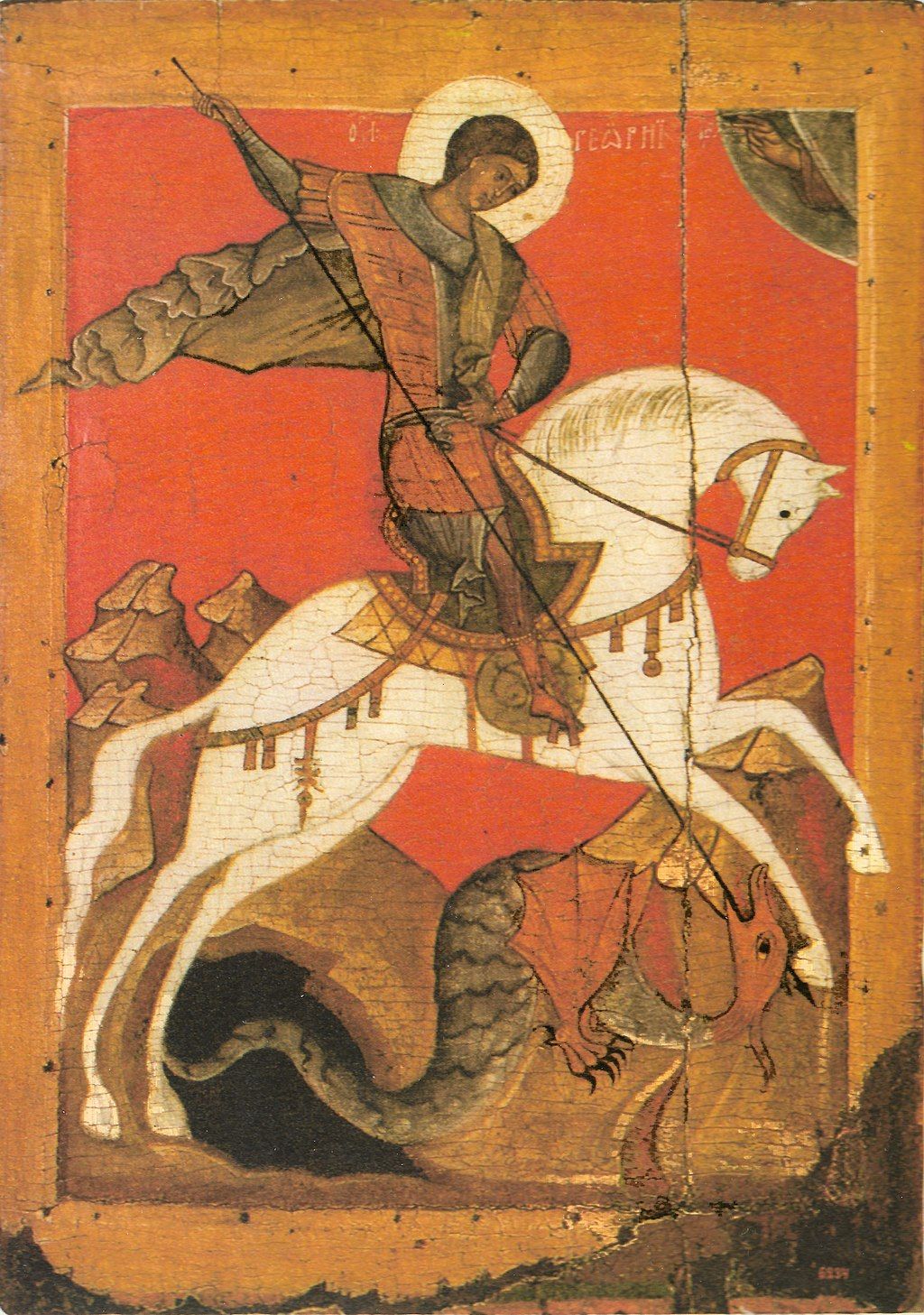Drone Ethics Part 12: St George's Lance

One of the key questions thrown up by the rise of drone warfare is how to persuade combatants to adhere to some kind of common norm on the limits of violence in conflict when one side has such an overwhelming advantage. In Drone Theory (2015) Gregoire Chamayou attempts to address this question by drawing on the work of Carl Schmitt - seemingly the left's favourite Nazi jurist due to his critique of liberalism - and his analysis of aerial bombardment formed during WW2.
St George's Lance
What Schmitt had noticed, Chamayou writes, is that airpower was not just a new technology of war but a shift in the way those combatants who were now "stratospheric" related to those others who remained “telluric” - bound to the surface of the earth: “Bombing pilots use their weapons against the population of an enemy country as vertically as St. George used his lance against the dragon...Thus, one is compelled to push the discrimination of the opponent into the abyss” (pp.165-166). What this observation means for modern drone warfare, Chamayou argues, is that the "verticalisation of armed violence implies a tendency toward the absolute hostilisation of the enemy" that is not just incidental but "implicit in the material nature of the weapon" (p.165).
Justa Causa
For some in the international law community, Chamayou argues, this complete othering of the enemy is no problem. For those theorists of international law motivated by justa causa, the assumed moral certitude of the cause means "I have the right to kill, you do not. Why? Because I am just and you are unjust. I am good, you are bad, and only the good have the right to kill the bad" (p.164). In this framing of course Western states are justified in using drones with impunity because it assumes that the West is moral and its enemies immoral. This is not to argue that the moral weighting of combatants is something that cannot be judged, but that in the case of warfare it is a dangerous irrelevance, and is easily reversed and undermined the very moment the enemy replies that no, we are the virtuous ones and you are the evil ones, and to prove it we will kill you before you kill us. Under this rubric all that is left is the idea that "might makes right" based on sheer power that undermines the essence of international law altogether and along with it any kind of jus in bello, i.e. restraint in the levels of violence in war.
Asymmetrical rights
In order to save international law from itself by preserving at least a modicum of incentive towards restraint on the levels of violence combatants might inflict on each other, Chamayou draws on the work of Charles Chaumont, a leading French critic of international law, and his idea of the "asymmetrisation of rights" in warfare (p.265).
For Chaumont, if one is concerned with preventing war from degenerating into a no holds barred war of all against all there must be some way of staving off the desperate turn to extreme forms of violence that can occur when applying the existing international laws of war equally puts one side at an impossible disadvantage. Here, Chaumont draws on the example of guerrilla warfare to make his point: what would have happened to the French Resistance if they had worn uniforms and carried their weapons openly during WW2 in order to comply with the Geneva Conventions? Chaumont's proposal to keep combatants invested in the moderation of violence breaks with both any calculation of the supposed righteousness of one side or the other found in justa causa, and the absolute legal equality required of combatants found in jus in bello, by proposing that "assymetrical powers deserve asymmetrical rights". What this would look like in practice Chamayou and Chaumont unfortunately do not say, but what it does not mean is some kind of pistols at dawn equality of armament but at least an "an equal right to fight". Chamayou points out to those who might balk at this asymmetrisation of rights in warfare that in effect drone supporters say the same thing, but only in one direction, turning an asymmetric advantage into an absolute "monopolistic right to lethal punishment" that threatens to bring down the last vestiges of the rules of warfare with it (p.265).
If, with the absolute verticalisation of warfare brought about by military drones the essence of war becomes no longer about combat but annihilation, Chamayou's articulation of Chaumont goes, then there is little to stop the disadvantaged party from carrying out the worst kind of atrocities and crimes against humanity as some wretched attempt to inflict harm on their opponents, whereby when faced with unassailable drones the suicide bombing of civilian venues takes on a perverse logic.
